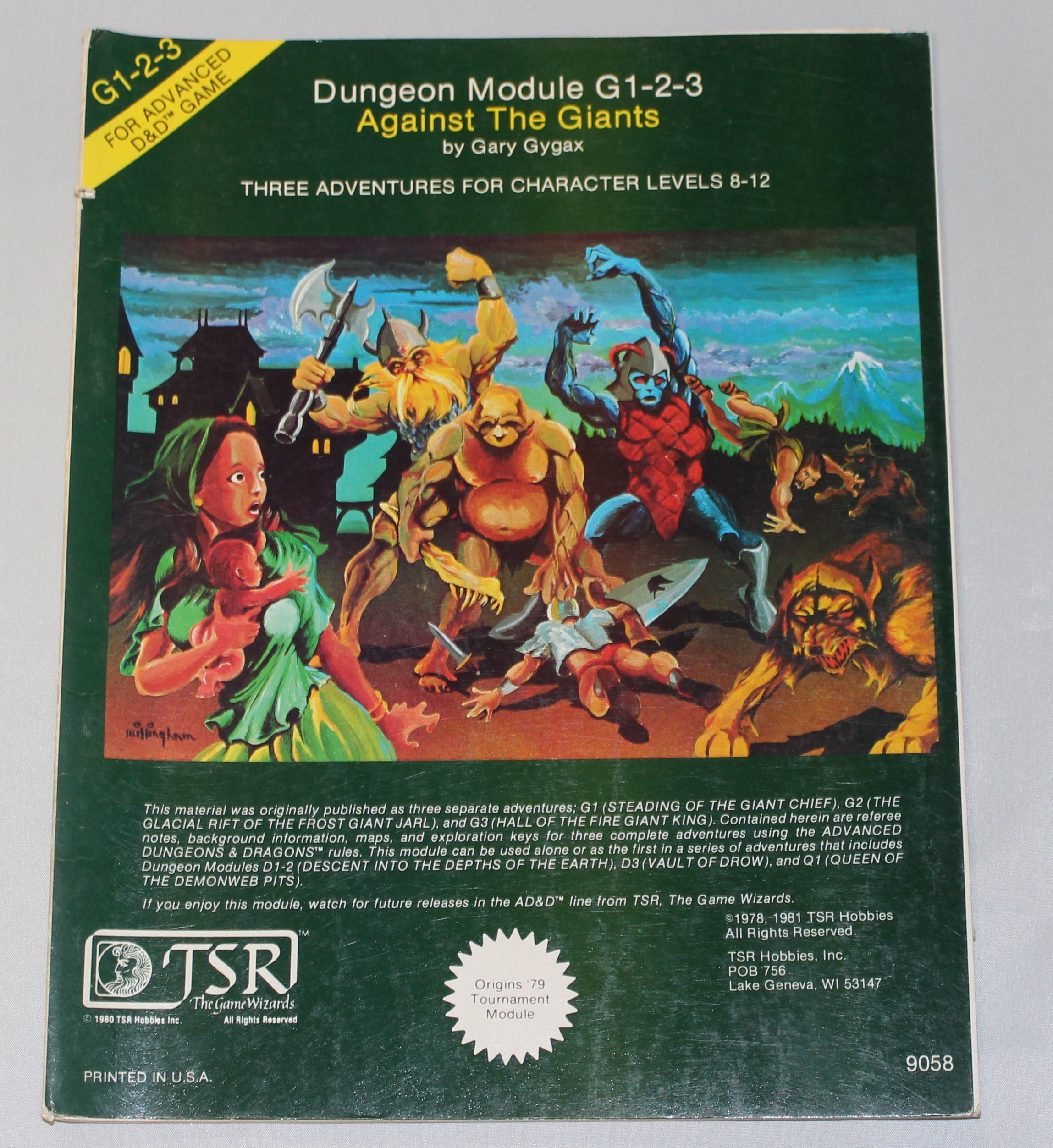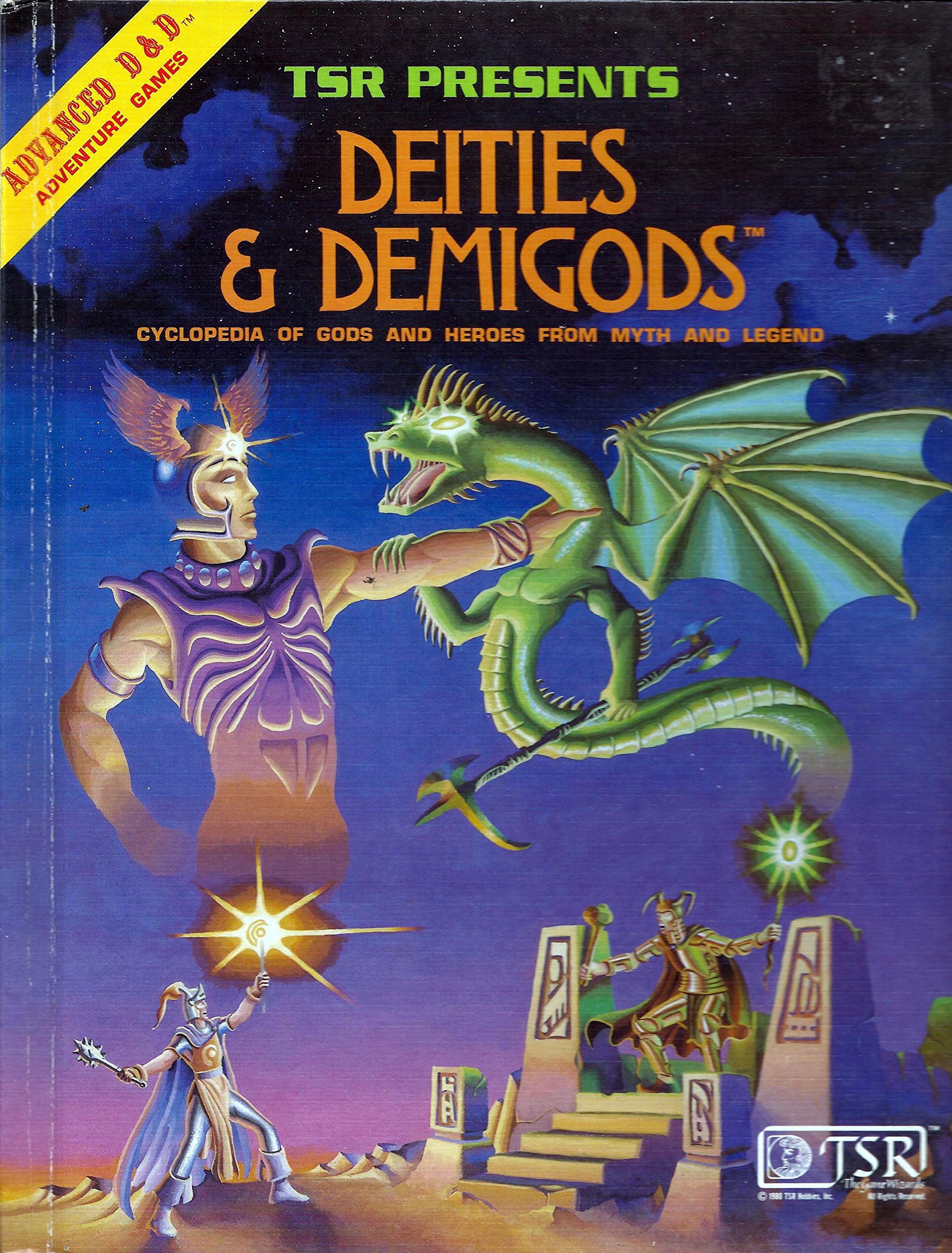The Against the Giants series (the first adventure reviewed here, and the other two here) wraps with a hook for further adventures within the Underdark, based on the premise that the Giants were backed by the Drow. This leads to the party heading into the Underdark to do battle against the Drow. Continue reading
Tag Archives: AD&D

Adventure Review: G2 & G3 – The Glacial Rift of the Frost Giant Jarl & The Hall of the Fire Giant King
A while back, I reviewed G1: The Steading of the Hill Giant Chief, an adventure that launched AD&D’s first real adventure path, and had some really interesting adventure design concepts. The other two adventures in the series – G2: The Glacial Rift of the Frost Giant Jarl and G3: The Hall of the Fire Giant King, are much more conventional dungeon crawls, so they’re worth discussing together. Continue reading

Adventure Review: G1 – The Steading of the Hill Giant Chief
The concept of the “adventure path” – a series of adventures or vignettes strung together to form a larger campaign – has become increasingly more prevalent in tabletop gaming. Even standalone adventures, like some of the adventures for Dungeon Crawl Classics, are built around the idea of being part of a larger world, with the idea that the player characters would have further adventures brought on by the events of this adventure.
Probably one of the first examples of this to be published, though, is the G-D-Q series of adventures published by TSR for AD&D 1st Edition. The adventures were originally created to be run as a series of convention scenarios, but even then, the narrative of the three series of adventures were designed to be strung together into an ongoing story. In the interest of that, I’ve taken a look at the first scenario in the G series – The Steading of the Hill Giant Chief.
G1 is significantly different from Keep on the Borderlands in several very dramatic ways. The most obvious one is that it is designed for more high-level characters, and not a normal sized party either – the recommended party is nine 9th level characters, with less players being viable if the players are more experienced. Not if the overall party level is higher or more powerful, but if the players are more experienced and can consequently metagame better – which is especially interesting that the general vibe with modern roleplaying is in favor of less metagaming.
The other major difference is that Keep on the Borderlands is a more conventional dungeon crawl, though one designed with the concept of a bunch of monster apartments around a central hub. G1, on the other hand, has a much more cohesive structure. To make a comparison to modern video games, I’d compare it to a level from Hitman – you have an objective (Break the back of the Hill giants), and a living breathing environment that you have to navigate to accomplish that objective. Just rushing in and killing everyone all willy-nilly will get you killed, so you have to sneak through the environment trying not to get noticed. Indeed, the main set-piece of the environment, the ongoing feast between of the Hill Giant Chief and his supporters, is a location to be avoided if possible, because if you draw their attention you’re going to get squashed flat.
Further, there are several elements of the set-piece encounter that can be picked off if they show up as random encounters. A DM who wants to put some more work into this can change this from being triggered at random to setting up a guard schedule for some of the roaming portions of the set-piece. This makes it more like a Hitman sandbox level, and depending on your players might make the level more accommodating than approachable than the level as written.
As in Hitman, the preferred way of approaching the problem is to skirt the perimeter, finding a disguise if possible, and picking off guards quietly along the way. The adventure does have room for a more conventional dungeon crawl, mainly within the literal dungeons beneath the steading – where the Hill Giants keep their orcish slave labor. This isn’t a case of wiping out the orcs – but rather wiping out their guards – a few slaves upstairs will tip the players off to an earlier uprising and where the leaders are held, and in turn that if someone can take on some of the guards downstairs they can launch a larger uprising – something that sadly nobody has based a Hitman level around.
My complaint around the adventure is actually the framing narrative – that the band of adventurers are sent by their King to accomplish this task by pain of death. This makes sense within the context of a convention tournament scenario, but not within the context of a home game. Once you start approaching Ninth level, you’re starting to approach name level, and with it the responsibility of staking out land and maintaining it. So, I’d adjust the framing narrative to accommodate that – accomplishing this quest will include not only fame, riches, and glory, but also a land grant from your King that you can use to build your Name Level buildings – with the catch being that in the course of this adventure you learn that to pacify this area you will not only need to take out the Hill Giants, but also the other two groups of Giants as well (with the players learning of the Drow involvement partway through pacifying their new territory).
Overall, G1: The Steading of the Hill Giant Chief, is a really well structured adventure that provides a great break from the conventional dungeon delve, and with a few adjustments to the structure of the adventure overall, and the initial adventure hook, will make for something to keep your players adventuring and engaged once they hit Name Level.

Book Review: Deities and Demigods (1980)
Probably one of the first sourcebooks put out for Advanced Dungeons & Dragons was Deities and Demigods, a book with a collection of beings that would provide something for your Cleric to be, well, a cleric of. However, it doesn’t really hold up very well, particularly compared to later deity books for later editions of AD&D and D&D. Continue reading
